
Annals of Mathematical Sciences and Applications
Scope & Guideline
Fostering Dialogue in the Realm of Mathematical Applications
Introduction
Aims and Scopes
- Applied Mathematics:
The journal emphasizes applied mathematical techniques across diverse fields, including engineering, physics, and biology, showcasing the relevance of mathematical theories in solving real-world problems. - Numerical Analysis:
A significant focus lies in numerical methods and algorithms, addressing computational challenges and developing efficient techniques for solving complex mathematical problems. - Optimization and Control Theory:
Research in optimization and control theory is prevalent, with studies exploring algorithms and frameworks for enhancing decision-making processes and system controls. - Mathematical Modeling:
The journal publishes works on mathematical modeling of phenomena in various disciplines, particularly those that involve dynamic systems and population dynamics. - Theoretical Developments:
Theoretical advancements in mathematical sciences, including new algorithms, mathematical proofs, and conceptual frameworks, are regularly featured, contributing to the foundational knowledge in the field.
Trending and Emerging
- Machine Learning and Deep Learning Applications:
There is a notable increase in research integrating machine learning and deep learning with mathematical modeling, particularly in areas such as image processing, facial recognition, and optimization, showcasing the growing intersection of mathematics and AI. - Fractional Calculus and Its Applications:
The rise of fractional calculus in mathematical modeling, particularly for complex systems, indicates an emerging trend as researchers explore its implications in various fields, including physics and engineering. - Uncertainty Quantification:
Research focusing on uncertainty analysis and quantification in mathematical models, especially in biological and ecological contexts, is gaining traction, highlighting the importance of robust modeling in uncertain environments. - Geometric and Topological Methods:
Emerging studies on geometric and topological methods, particularly in applications related to medical imaging and data analysis, reflect an increasing interest in these areas within mathematical sciences. - Computational Fluid Dynamics (CFD):
There is a growing emphasis on computational techniques for fluid dynamics, particularly in relation to viscoelastic fluids and complex systems, indicating a trend towards practical applications of mathematical theories in engineering.
Declining or Waning
- Classical Differential Equations:
Research centered on classical differential equations has become less frequent, suggesting a possible shift towards more complex or generalized forms of differential equations in contemporary studies. - Static Mathematical Models:
There appears to be a waning interest in purely static mathematical models, as recent publications increasingly favor dynamic models that incorporate time-dependent variables and interactions. - Basic Statistical Methods:
Basic statistical methods are appearing less frequently in favor of more advanced analytical techniques, such as machine learning and deep learning applications, reflecting a trend towards more sophisticated data analysis.
Similar Journals

Applied Mathematics in Science and Engineering
Bridging Disciplines for a Mathematical Tomorrow.Applied Mathematics in Science and Engineering is a prestigious academic journal published by TAYLOR & FRANCIS LTD, dedicated to presenting innovative research at the intersection of applied mathematics, science, and engineering disciplines. Since its inception as an Open Access platform in 2022, this journal has empowered researchers worldwide to disseminate their findings without barriers, enhancing knowledge-sharing among scholars, professionals, and students. Covering a wide range of topics, including but not limited to mathematical modeling, computational methods, and engineering applications, Applied Mathematics in Science and Engineering aims to foster interdisciplinary collaboration and advance the field through high-quality research articles. With a commitment to rigorous peer review and academic excellence, this journal serves as an essential resource for anyone seeking to stay at the forefront of applied mathematics in contemporary scientific inquiry.

APPLIED MATHEMATICS AND OPTIMIZATION
Catalyzing Advancements in Applied Mathematics and OptimizationApplied Mathematics and Optimization, published by Springer, is a prestigious journal dedicated to the rigorous exploration of applied mathematics, optimization techniques, and their multifaceted applications. Since its inception in 1974, the journal has maintained a robust reputation within the academic community, achieving a commendable Q1 ranking in both Applied Mathematics and Control and Optimization categories as of 2023. With an impact factor that underscores its influence in the field, the journal provides a platform for researchers and practitioners to disseminate innovative methodologies and significant advancements. While it does not offer Open Access, the journal’s esteemed peer-reviewed articles serve as invaluable resources for the advancement of theoretical knowledge and practical applications. Researchers, professionals, and students alike will find Applied Mathematics and Optimization an essential source for staying at the forefront of mathematical sciences, particularly in optimizing real-world systems and processes.

TWMS Journal of Applied and Engineering Mathematics
Fostering Breakthroughs in Computational and Numerical AnalysisTWMS Journal of Applied and Engineering Mathematics, published by TURKIC WORLD MATHEMATICAL SOC, is a distinguished open-access journal that has been contributing to the field of applied mathematics since 2011. With a focus on theoretical and practical applications spanning various areas including Computational Mathematics, Control and Optimization, and Numerical Analysis, this journal serves as a vital resource for researchers and professionals looking to disseminate and access quality research. Although currently positioned in the Q4 quartile across several mathematical categories in 2023, the journal aims to provide a platform for innovative research, fostering collaboration and knowledge sharing among scholars worldwide. Located in Turkey, this journal emphasizes accessible content, inviting a diverse audience to explore breakthroughs and advancements in mathematical sciences. With its broad spectrum of topics, TWMS Journal not only enriches academic discourse but also plays a crucial role in supporting the development of new methodologies and technologies in engineering and applied mathematics.
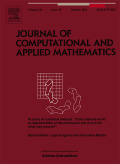
JOURNAL OF COMPUTATIONAL AND APPLIED MATHEMATICS
Exploring the Depths of Mathematical ApplicationsJOURNAL OF COMPUTATIONAL AND APPLIED MATHEMATICS, published by Elsevier, stands as a premier platform for researchers and practitioners in the fields of applied and computational mathematics. With an impressive convergence history from 1975 to 2025, this journal has established itself as a crucial reference point for innovative mathematical theories, methodologies, and applications. Holding a distinguished position in Scopus rankings—#85 out of 635 in Applied Mathematics and #36 out of 189 in Computational Mathematics—it operates in the highly competitive Q2 quartile for both disciplines as of 2023. Although currently not designated as an open-access journal, it remains widely respected for its rigorous peer-review process and high-quality research contributions. Researchers and professionals seeking to advance their work and engage with cutting-edge developments will find this journal an invaluable resource, fostering a deeper understanding and collaboration within the mathematical community.
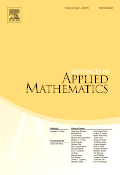
ADVANCES IN APPLIED MATHEMATICS
Unlocking the Potential of Mathematics for TomorrowADVANCES IN APPLIED MATHEMATICS, published by ACADEMIC PRESS INC ELSEVIER SCIENCE, is a prestigious journal that has served the mathematical community since 1980. With its ISSN 0196-8858 and E-ISSN 1090-2074, the journal is based in the United States, specifically in San Diego, CA. As a leading periodical in the field, it holds a notable Q2 ranking in Applied Mathematics and has been consistently ranked in the 43rd percentile among similar journals, illustrating its relevance and impact within the discipline. Although not an Open Access journal, ADVANCES IN APPLIED MATHEMATICS plays a crucial role in disseminating significant research findings, theoretical studies, and innovative applications of mathematics that address real-world problems. Researchers, professionals, and students alike will find valuable insights in its carefully curated publications, making it an essential resource for those looking to advance their understanding and application of mathematics.
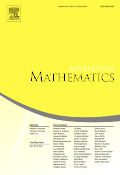
ADVANCES IN MATHEMATICS
Unveiling Cutting-Edge Discoveries in MathematicsADVANCES IN MATHEMATICS, published by Academic Press Inc. Elsevier Science, is a premier journal in the field of mathematics, with its ISSN 0001-8708 and E-ISSN 1090-2082. Renowned for its rigorous peer-reviewed research, this journal serves as a platform for disseminating cutting-edge advancements and innovative approaches across all branches of mathematics. With an impressive Q1 category ranking in Mathematics (miscellaneous) and a Scopus rank of 74/399 placing it in the 81st percentile, it is considered a vital resource for researchers and professionals seeking to stay abreast of emerging trends and developments. Although it is not currently an open access publication, ADVANCES IN MATHEMATICS remains committed to publishing high-quality articles that elevate the field and foster scholarly communication. Established in 1961 and continuously influential in advancing mathematical sciences, this journal is crucial for anyone deeply engaged in mathematical research.
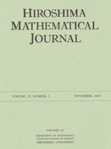
Hiroshima Mathematical Journal
Exploring the Depths of Algebra, Analysis, and BeyondThe Hiroshima Mathematical Journal, published by Hiroshima University, Graduate School of Science, serves as a prominent platform for disseminating high-quality research in the field of mathematics. Established in 1959, the journal has been an integral part of the mathematical community, focusing on areas such as Algebra, Number Theory, Analysis, and Geometry and Topology. Although currently classified in Q4 quartile rankings within its categories, the journal is committed to advancing mathematical knowledge and fostering scholarly dialogue. Its accessibility, combined with its long-standing history, makes it an essential resource for researchers, professionals, and students dedicated to exploring and enhancing the mathematical sciences. For those interested in contributing or accessing cutting-edge research, the Hiroshima Mathematical Journal continues to uphold its mission of excellence in mathematical scholarship.
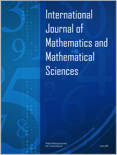
INTERNATIONAL JOURNAL OF MATHEMATICS AND MATHEMATICAL SCIENCES
Connecting theory and practice in mathematical sciences.INTERNATIONAL JOURNAL OF MATHEMATICS AND MATHEMATICAL SCIENCES is a distinguished peer-reviewed journal published by HINDAWI LTD, dedicated to advancing the field of mathematics and its various applications. Since its inception in 1978, the journal has been committed to open access, ensuring that research is freely available to all, thereby fostering greater collaboration and dissemination of knowledge. With an impressive Q3 ranking in the Mathematics (miscellaneous) category and a notable Scopus rank in the 72nd percentile, this journal is a vital resource for researchers, professionals, and students. The journal covers a wide range of topics in mathematics, from theoretical explorations to applied methodologies, and it continues to serve as a platform for significant contributions in this evolving discipline. Its continuous publication from 1978 to present reflects its enduring relevance and impact in the mathematical sciences community.

JAPAN JOURNAL OF INDUSTRIAL AND APPLIED MATHEMATICS
Exploring New Horizons in Engineering SolutionsThe Japan Journal of Industrial and Applied Mathematics, published by Springer Japan KK, is a pivotal platform for disseminating cutting-edge research in the fields of applied mathematics and engineering. With an ISSN of 0916-7005 and an E-ISSN of 1868-937X, this journal has been a cornerstone in the academic community since its inception in 1991 and will continue to contribute pivotal insights through 2024. Positioned in the Q3 category for both Applied Mathematics and Miscellaneous Engineering according to 2023 rankings, it is recognized for its diverse range of topics and interdisciplinary approaches. Despite its competitive ranking, the journal fosters valuable contributions that challenge conventional methodologies and inspire innovation. Researchers, professionals, and students alike will find the journal’s contents invaluable for advancing knowledge and exploring new methodologies in industrial and applied mathematics.
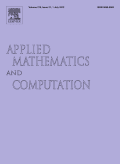
APPLIED MATHEMATICS AND COMPUTATION
Bridging Theory and Practice in Computational ResearchApplied Mathematics and Computation is a premier journal dedicated to the dissemination of high-quality research in the field of applied mathematics and computational methods. Published by Elsevier Science Inc, this influential journal has established itself as a key resource for researchers, professionals, and students interested in mathematical modeling, numerical analysis, computational algorithms, and their applications across various disciplines. With an impressive impact factor reflecting its scholarly credibility, it holds a distinguished position in the Q1 quartile for both applied and computational mathematics as of 2023, ranking #31/635 and #12/189 in Scopus categories respectively, thereby indicating its significant impact on the academic community. The journal encompasses a broad spectrum of topics, encouraging original research, critical reviews, and innovative methodologies that address real-world challenges. Although it currently does not offer open access options, it remains a cornerstone publication for those at the forefront of mathematical research, continuously bridging theory with practical computation since its inception in 1975.